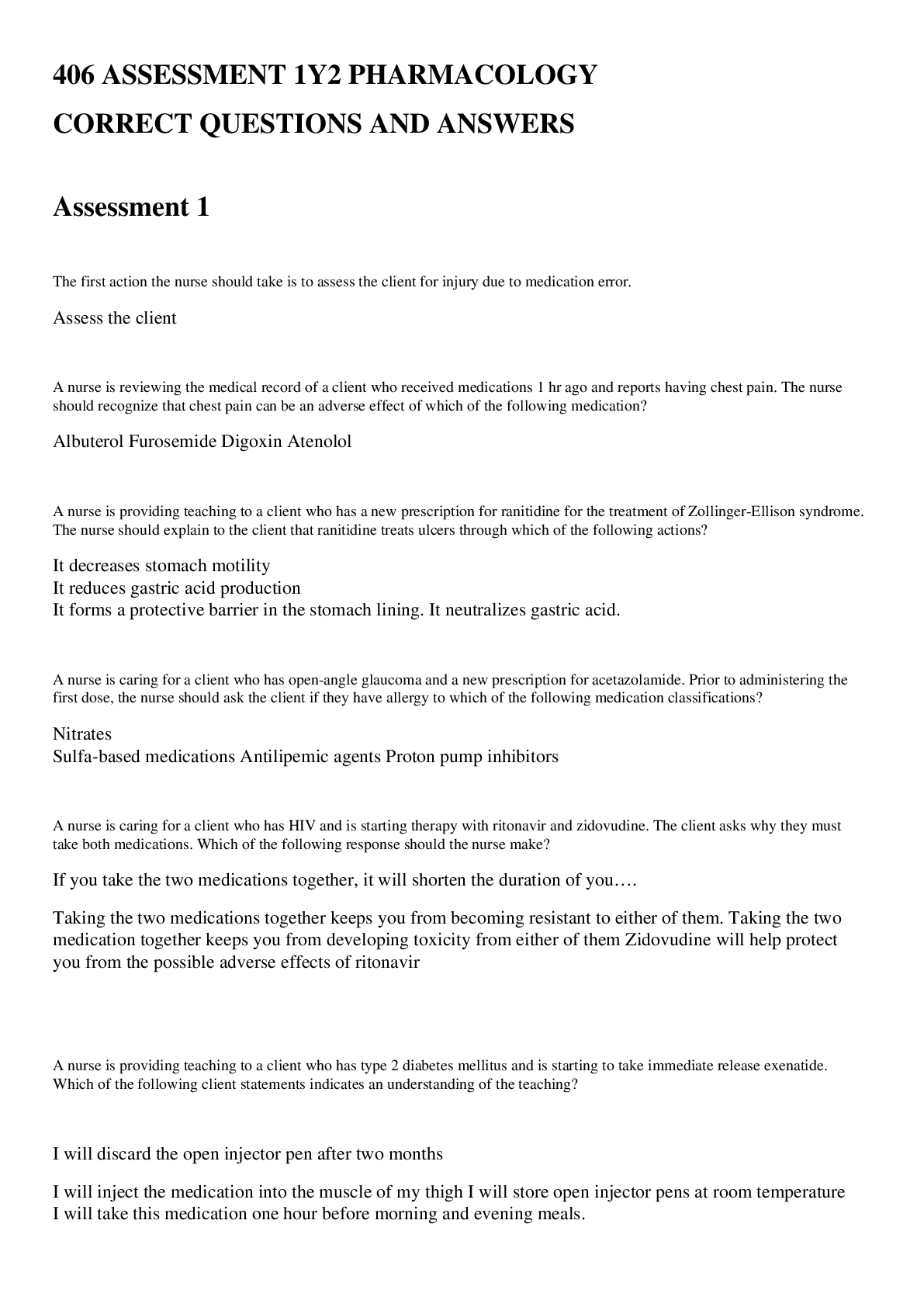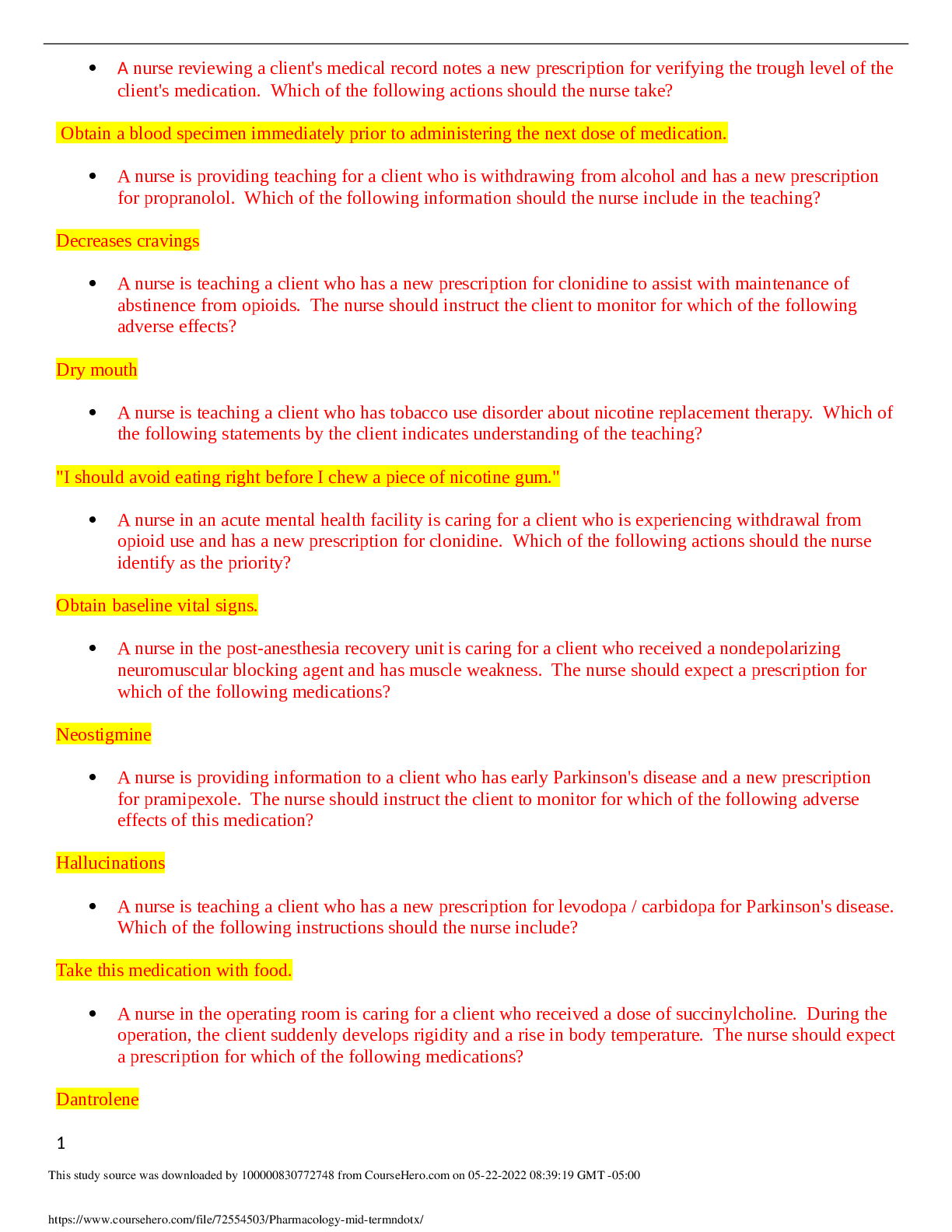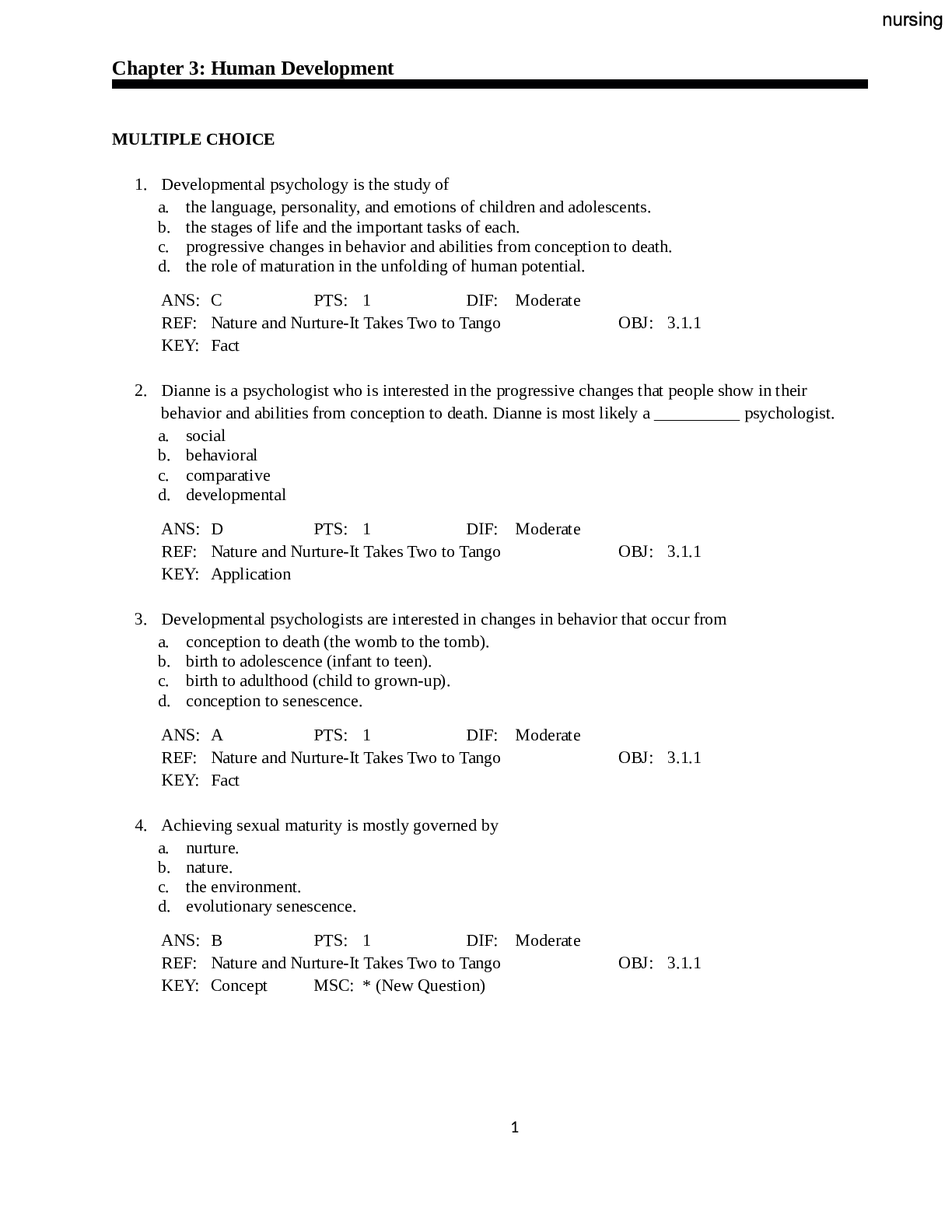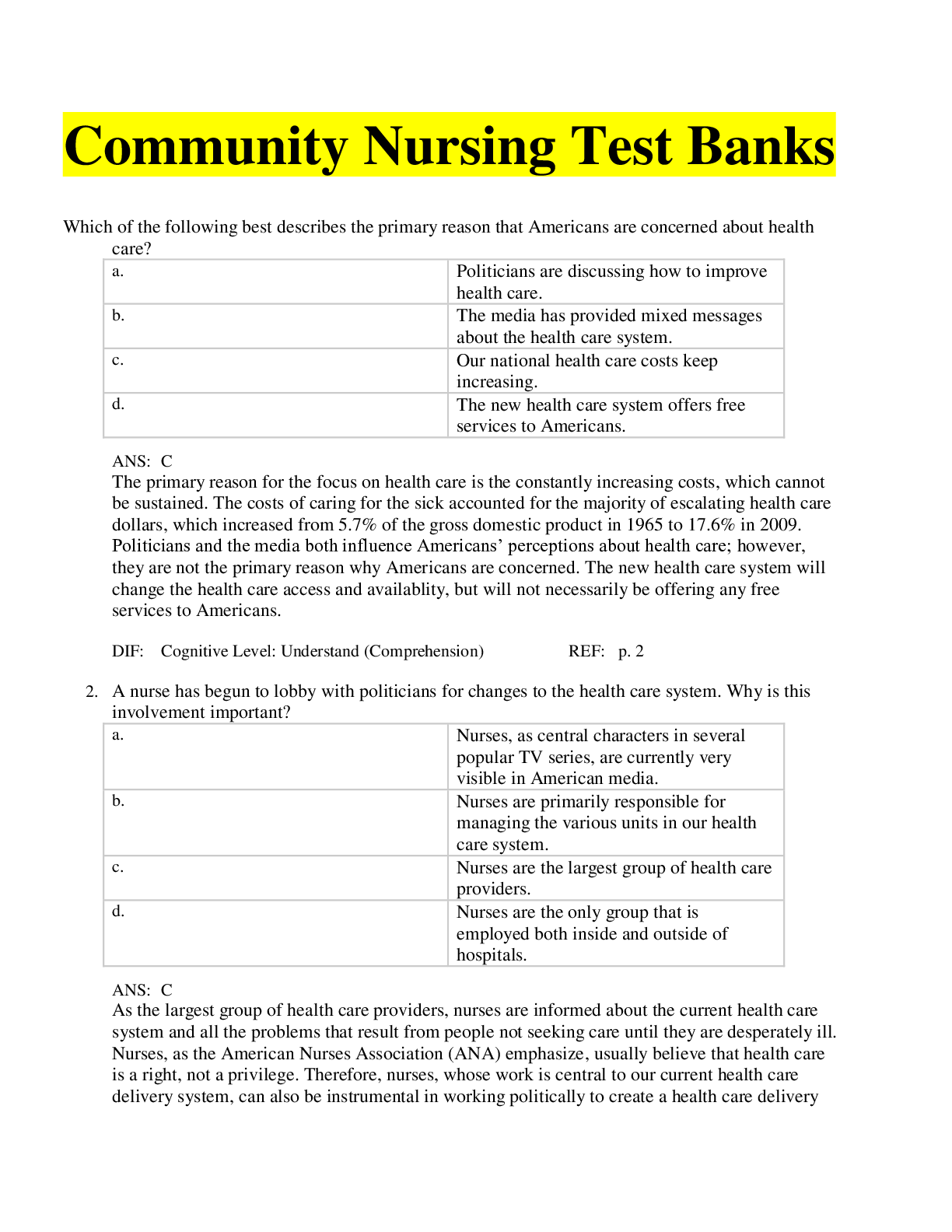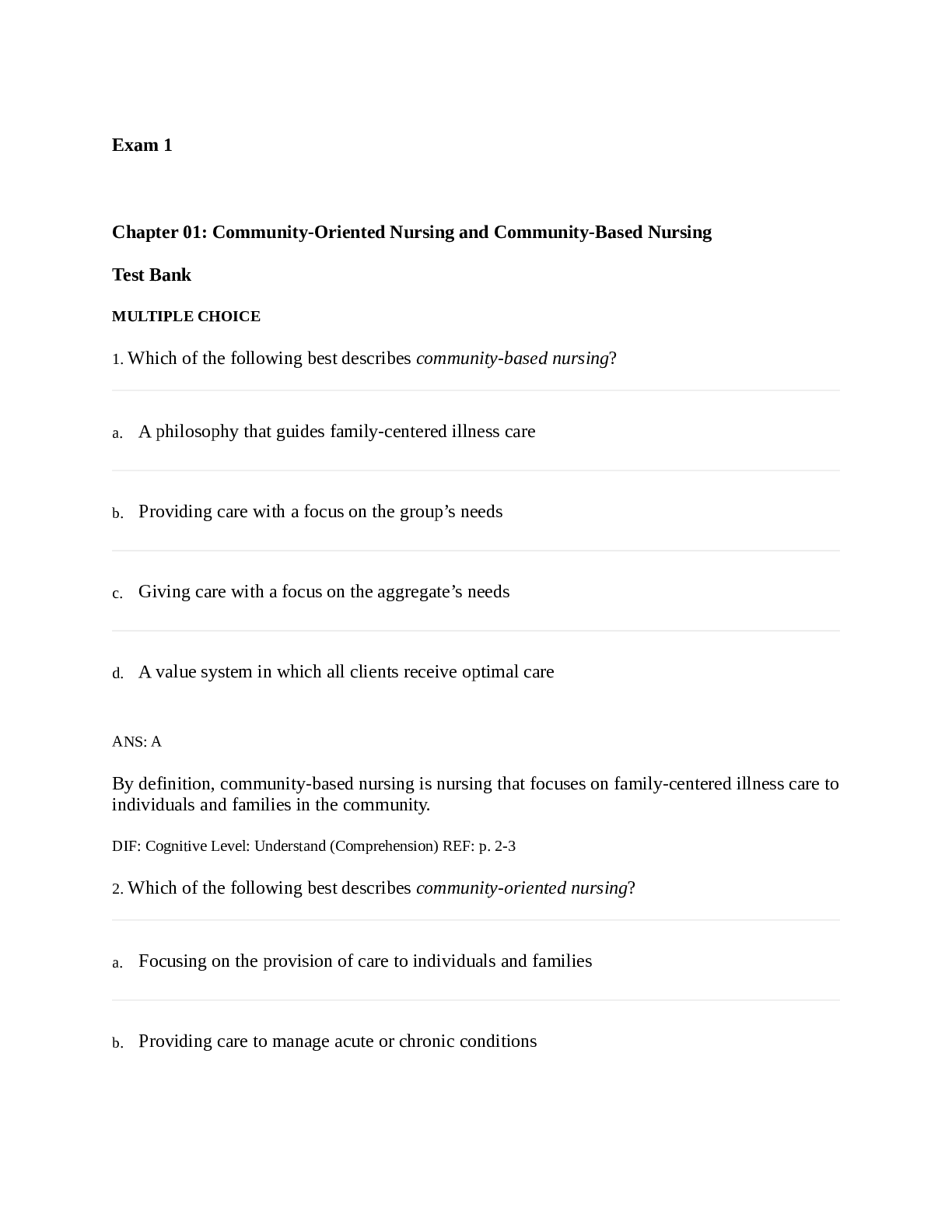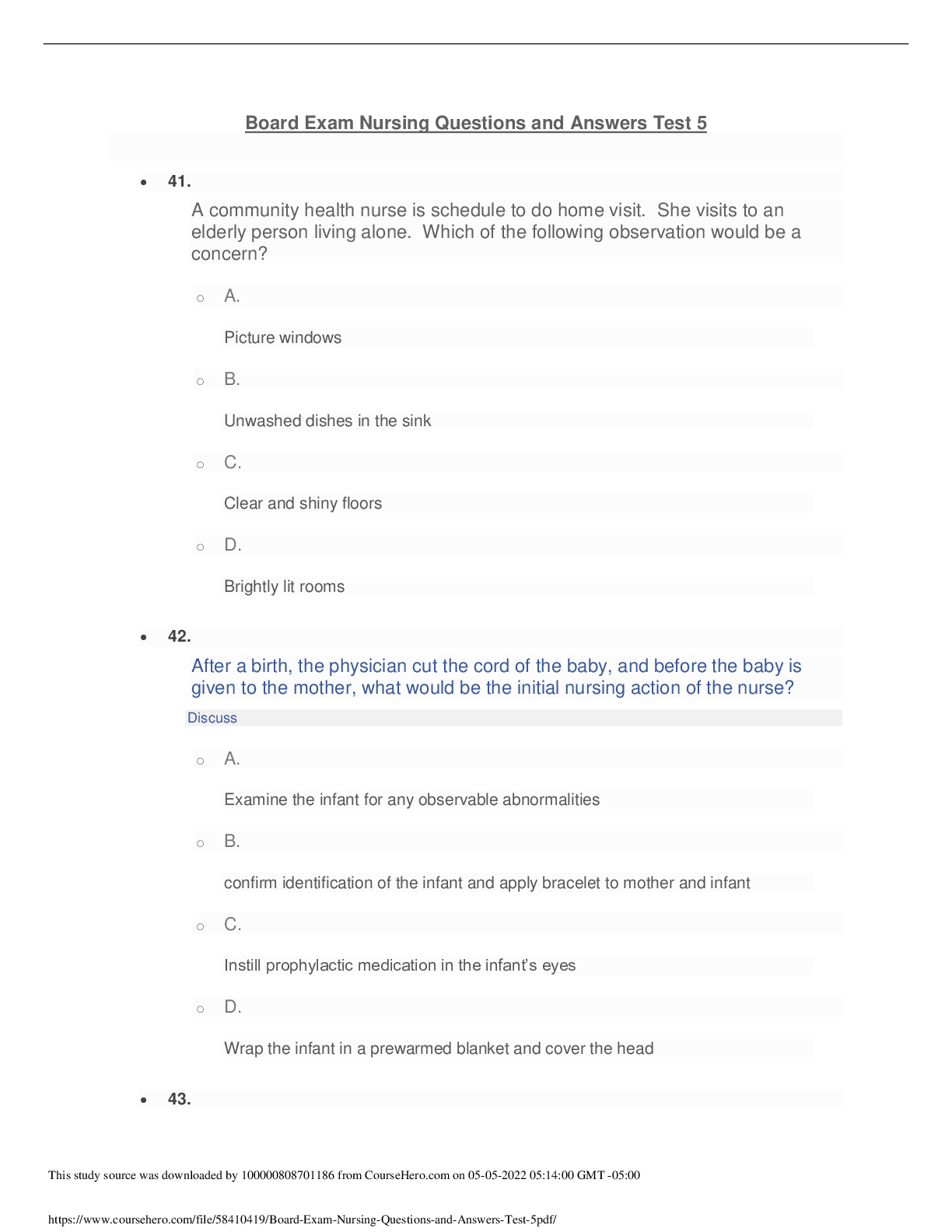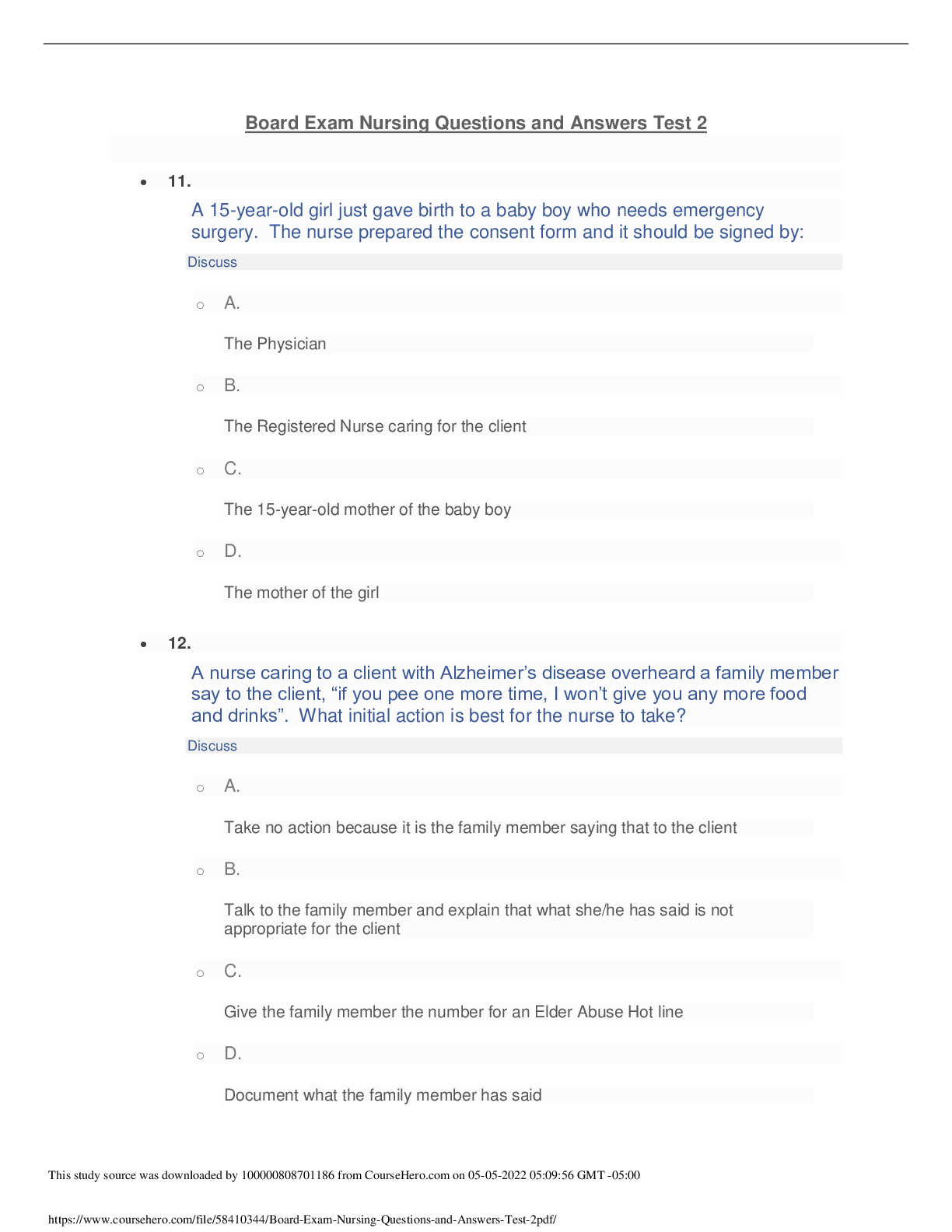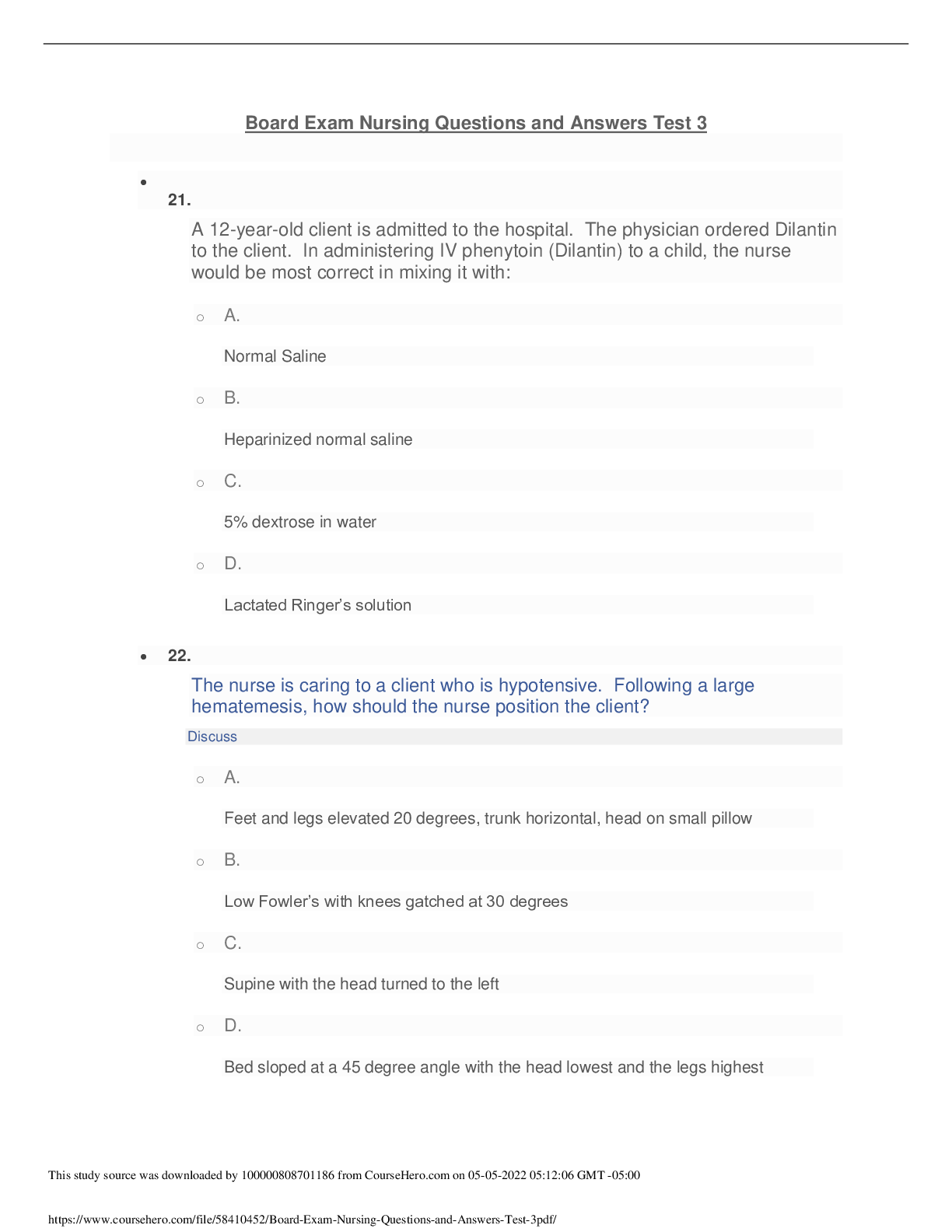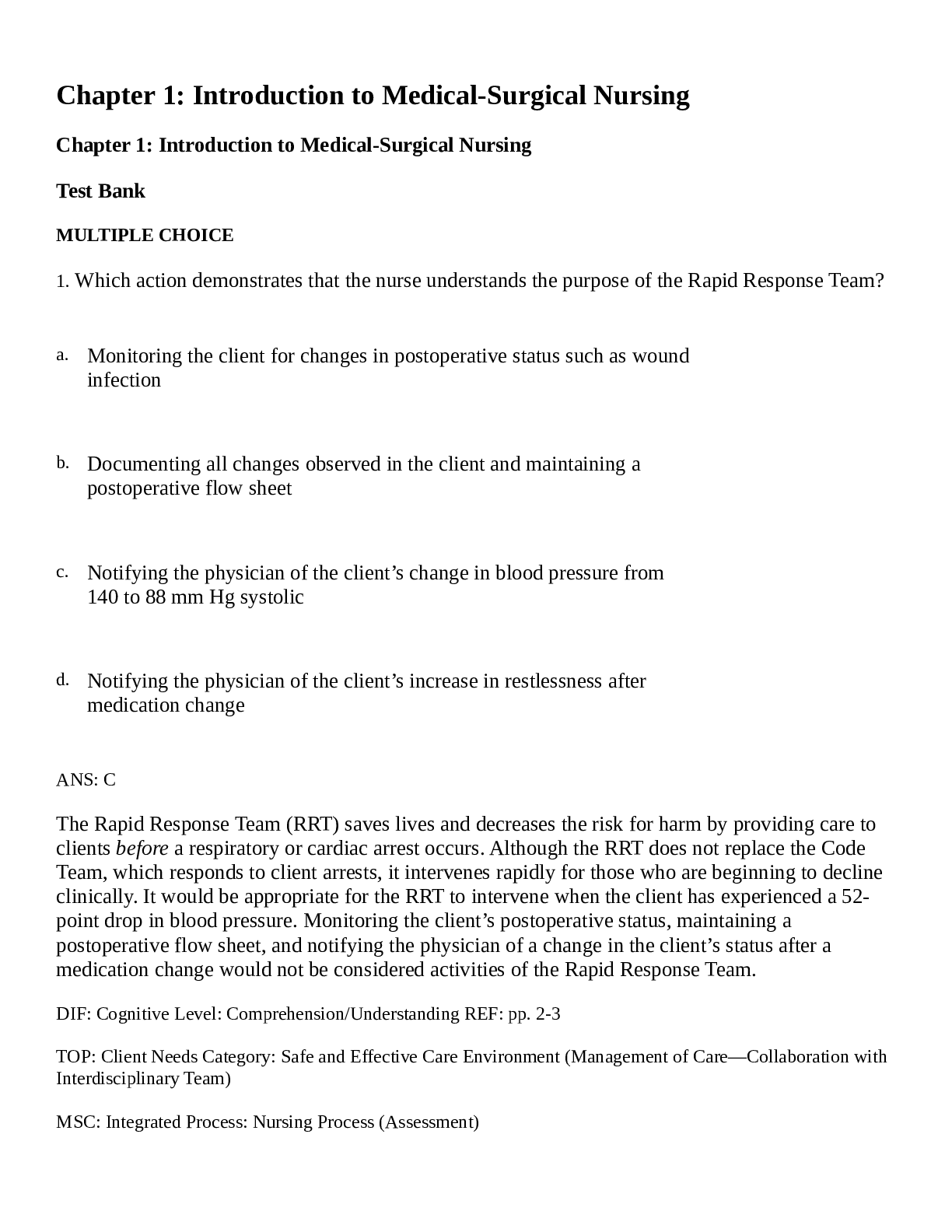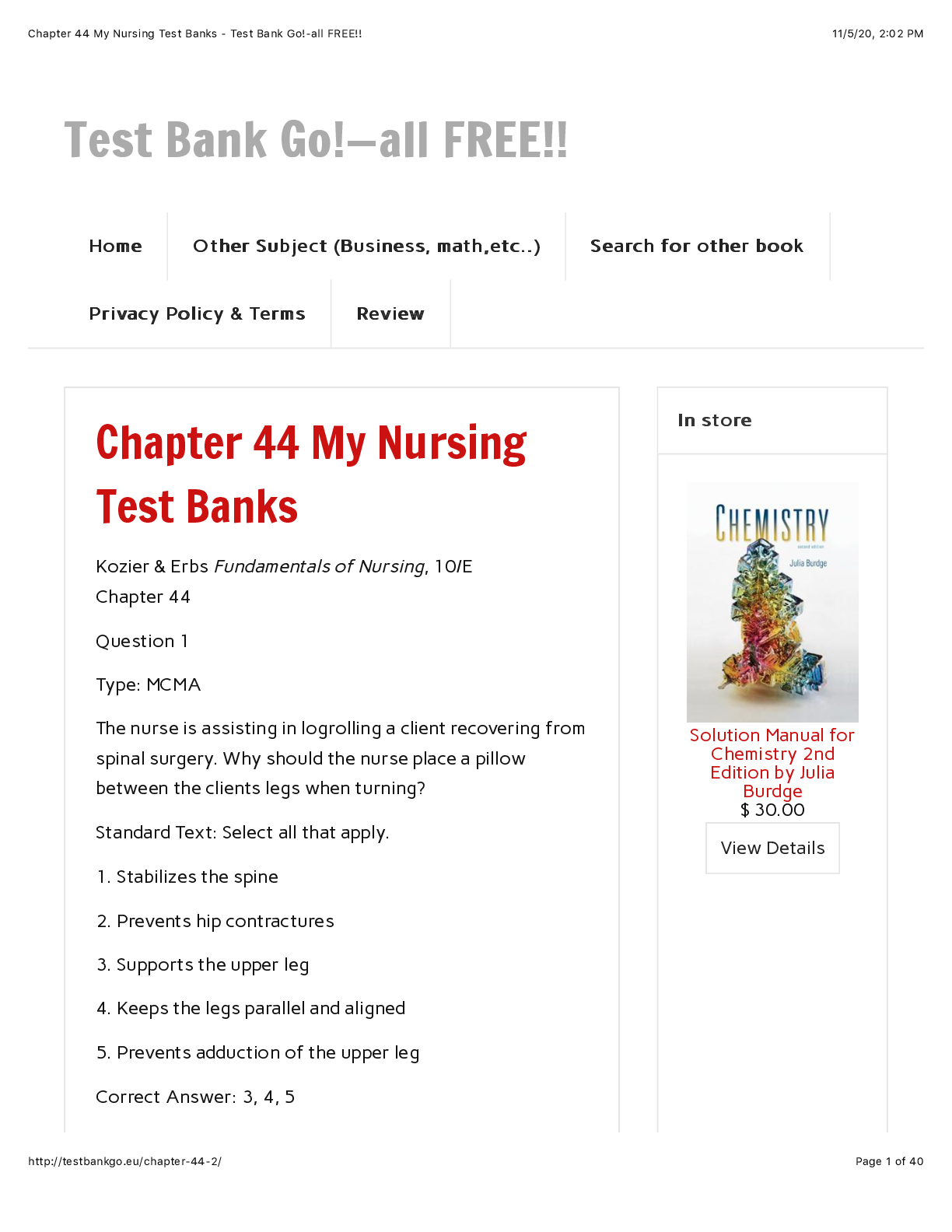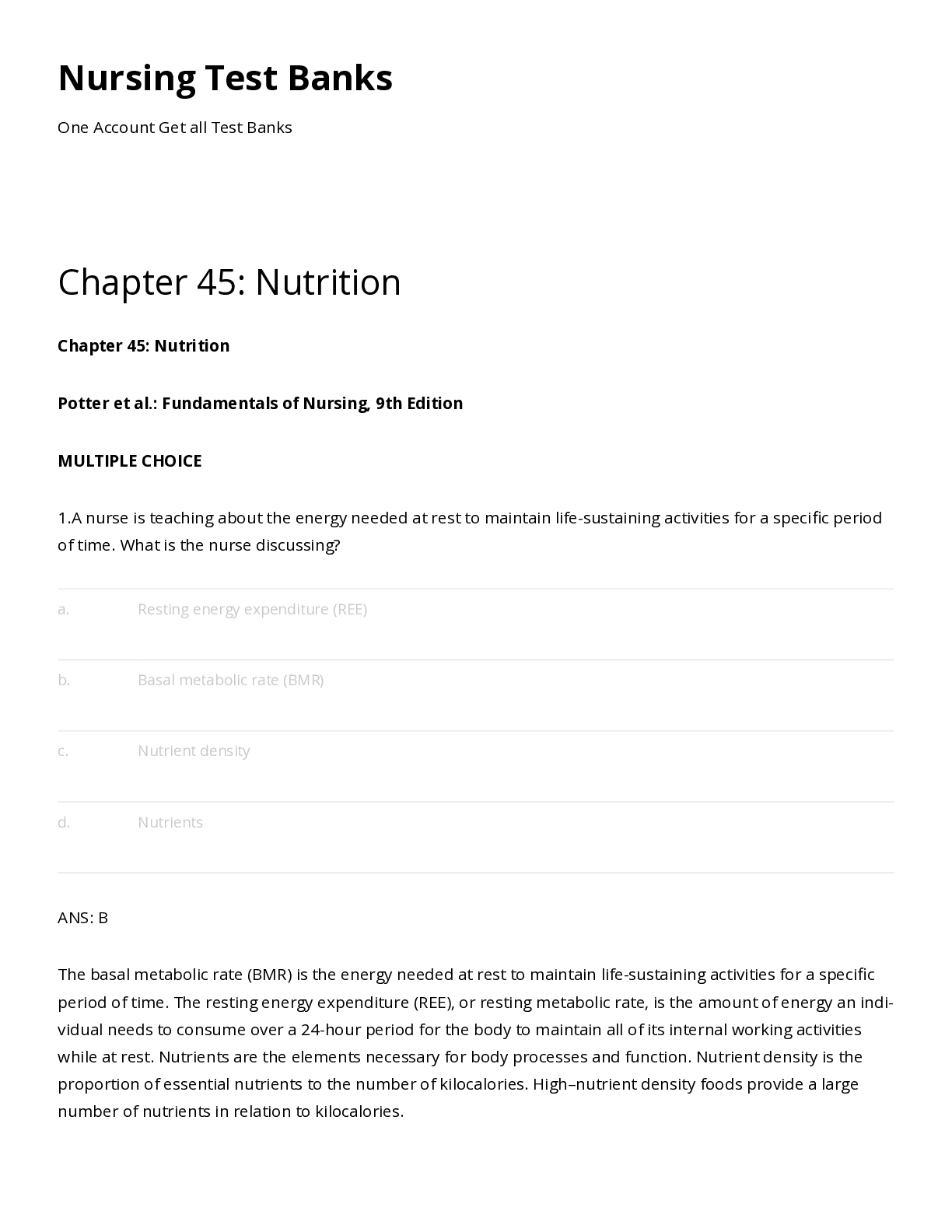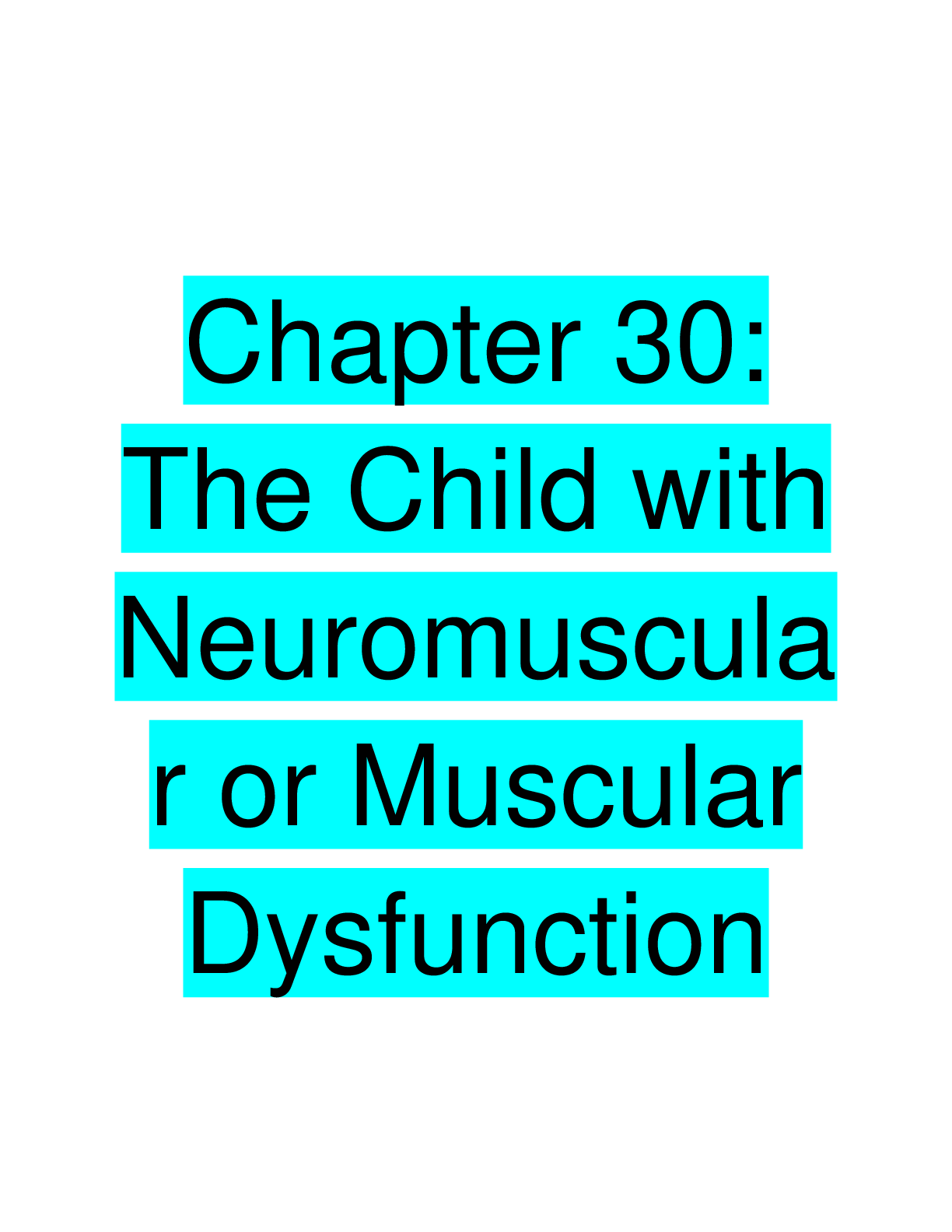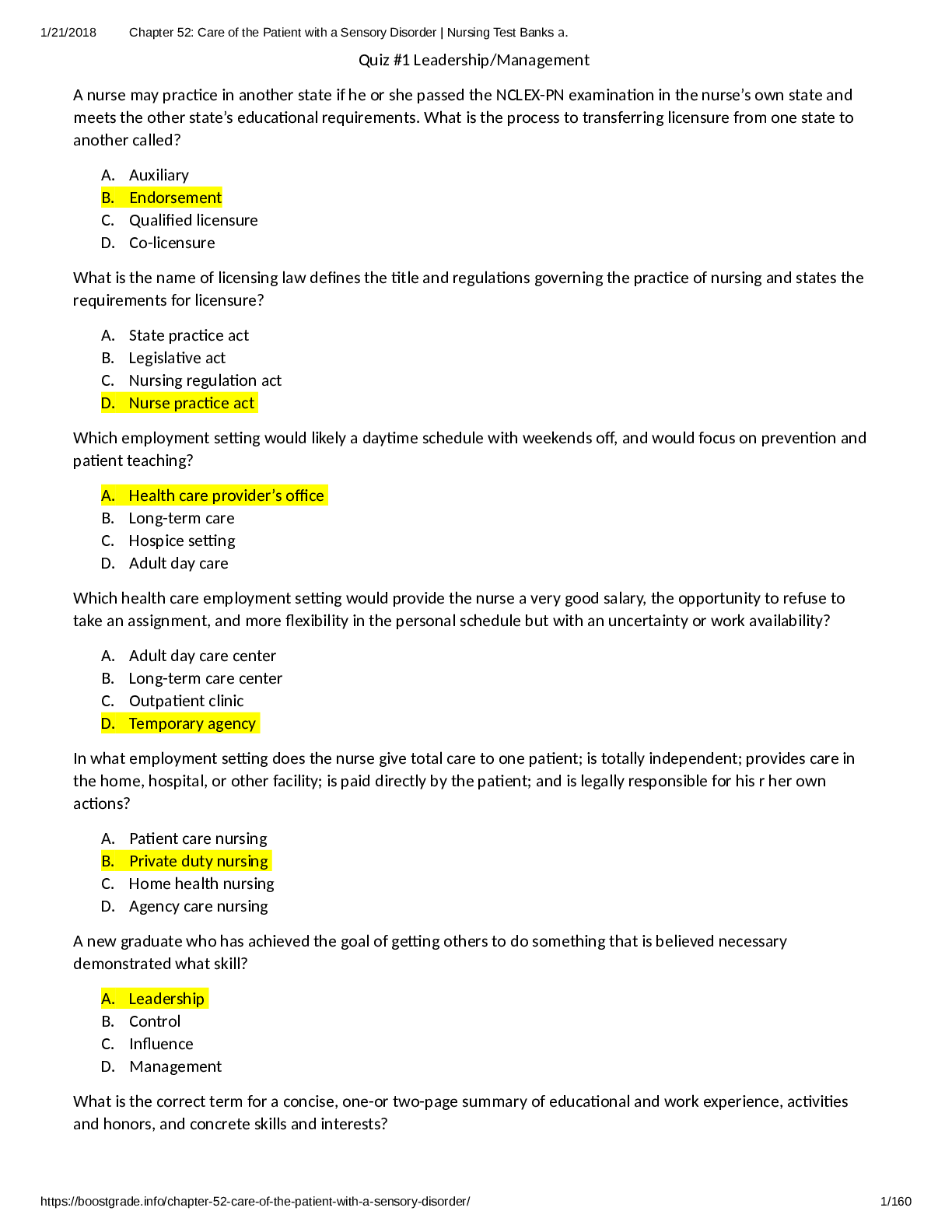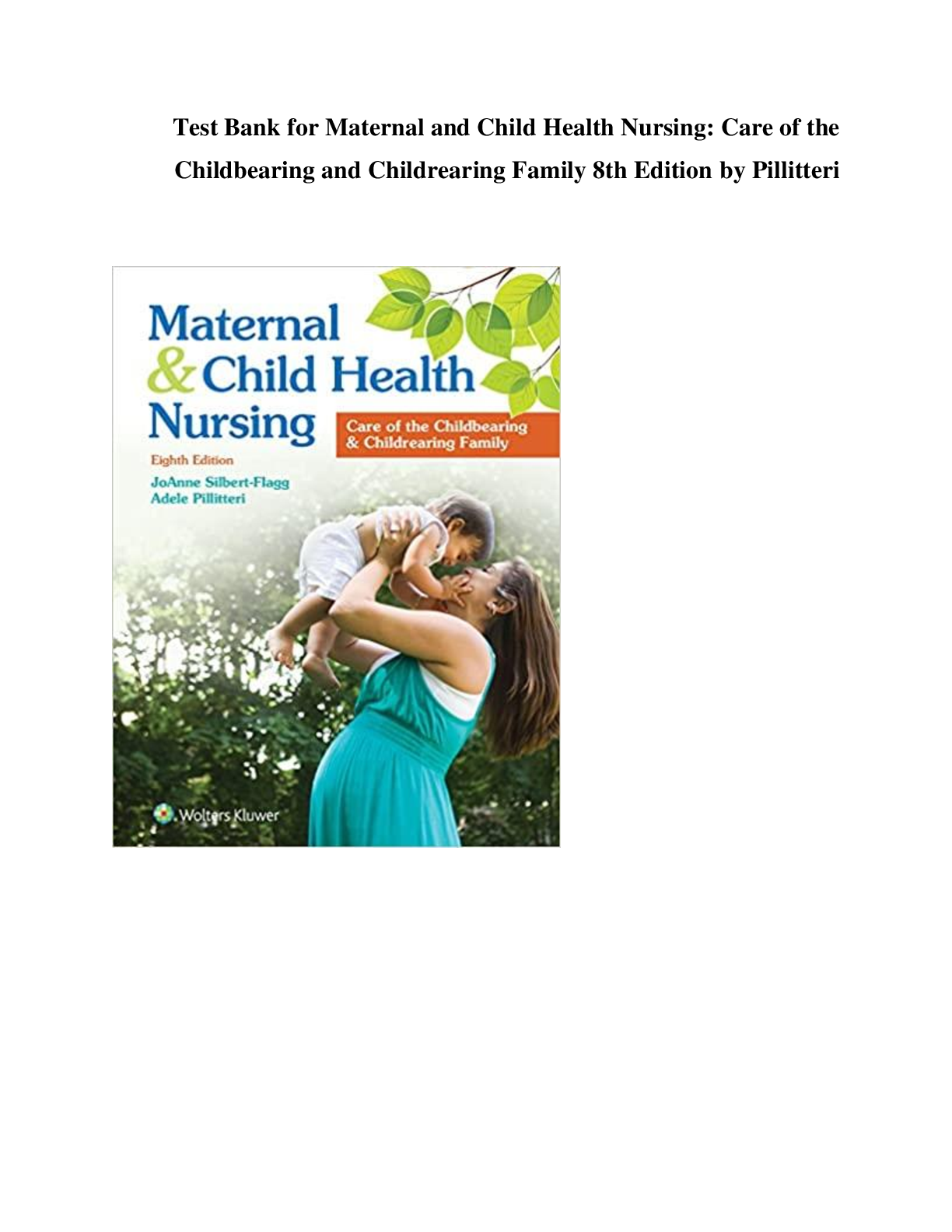*NURSING > QUESTIONS & ANSWERS > Foundations of Maternity, Women’s Health, and Child Health Nursing Test Bank (All)
Foundations of Maternity, Women’s Health, and Child Health Nursing Test Bank
Document Content and Description Below
Which factor significantly contributed to the shift from home births to hospital births in the early 20th century? a. Puerperal sepsis was identified as a risk factor in labor and delivery. b. Forc... eps were developed to facilitate difficult births. c. The importance of early parental-infant contact was identified. d. Technologic developments became available to physicians. ANS: D Feedback A Puerperal sepsis has been a known problem for generations. In the late 19th century, Semmelweis discovered how it could be prevented with improved hygienic practices. B The development of forceps to help physicians facilitate difficult births was a strong factor in the decrease of home births and increase of hospital births. Other important discoveries included chloroform, drugs to initiate labor, and the advancement of operative procedures such a cesarean birth. C Unlike home-births, early hospital births hindered bonding between parents and their infants. D Technological developments were available to physicians, not lay midwives. PTS: 1 DIF: Cognitive Level: Knowledge REF: p. 2 OBJ: Nursing Process: Assessment MSC: Client Needs: Safe and Effective Care Environment 2. Family-centered maternity care developed in response to: a. Demands by physicians for family involvement in childbirth b. The Sheppard-Towner Act of 1921 c. Parental requests that infants be allowed to remain with them rather than in a nursery d. Changes in pharmacologic management of labor ANS: C Feedback A Family-centered care was a request by parents, not physicians. B The Sheppard-Towner Act provided funds for state-managed programs for mothers and children. C As research began to identify the benefits of early extended parent-infant contact, parents began to insist that the infant remain with them. This gradually developed into the practice of rooming-in and finally to family-centered maternity care. D The changes in pharmacologic management of labor were not a factor in familynursing centered maternity care. PTS: 1 DIF: Cognitive Level: Knowledge REF: p. 3 OBJ: Nursing Process: Assessment MSC: Client Needs: Psychosocial Integrity 3. Which setting for childbirth allows the least amount of parent-infant contact? a. Labor/delivery/recovery/postpartum room b. Birth center c. Traditional hospital birth d. Home birth ANS: C Feedback A The labor/delivery/recovery/postpartum room setting allows increased parentinfant contact. B Birth centers are set up to allow an increase in parent-infant contact. C In the traditional hospital setting, the mother may see the infant for only short feeding periods, and the infant is cared for in a separate nursery. D Home births allow an increase in parent-infant contact. PTS: 1 DIF: Cognitive Level: Knowledge REF: p. 3 OBJ: Nursing Process: Planning MSC: Client Needs: Health Promotion and Maintenance 4. As a result of changes in health care delivery and funding, a current trend seen in the pediatric setting is: a. Increased hospitalization of children b. Decreased number of children living in poverty c. An increase in ambulatory care d. Decreased use of managed care ANS: C Feedback A Hospitalization for children has decreased. B Health care delivery has not altered the number of children living in poverty. C One effect of managed care has been that pediatric health care delivery has shifted dramatically from the acute care setting to the ambulatory setting. One of the biggest changes in health care has been the growth of managed care. The number of hospital beds being used has decreased as more care is given in outpatient settings and in the home. The number of children living in poverty has increased over the last decade. D Managed care has increased in order to control cost. PTS: 1 DIF: Cognitive Level: Knowledge REF: p. 6 OBJ: Nursing Process: Planning MSC: Client Needs: Safe and Effective Care Environment 5. The Women, Infants, and Children (WIC) program provides: a. Well-child examinations for infants and children living at the poverty level b. Immunizations for high-risk infants and children c. Screening for infants with developmental disorders d. Supplemental food supplies to low-income women who are pregnant or breastfeeding ANS: D Feedback A Medicaid’s Early and Periodic Screening, Diagnosis, and Treatment Program provides for well-child examinations and for treatment of any medical problems diagnosed during such checkups. B Children in the WIC program are often linked with immunizations, but that is not the primary focus of the program. C Public Law 99-457 provides financial incentives to states to establish comprehensive early intervention services for infants and toddlers with, or at risk for, developmental disabilities. D WIC is a federal program that provides supplemental food supplies to lowincome women who are pregnant or breastfeeding and to their children until age 5 years. PTS: 1 DIF: Cognitive Level: Comprehension REF: p. 2 | Tables 1-1, 1-9 OBJ: Nursing Process: Assessment MSC: Client Needs: Physiologic Integrity 6. In most states, adolescents who are not emancipated minors must have the permission of their parents before: a. Treatment for drug abuse b. Treatment for sexually transmitted diseases (STDs) c. Accessing birth control d. Surgery ANS: D [Show More]
Last updated: 1 year ago
Preview 1 out of 721 pages
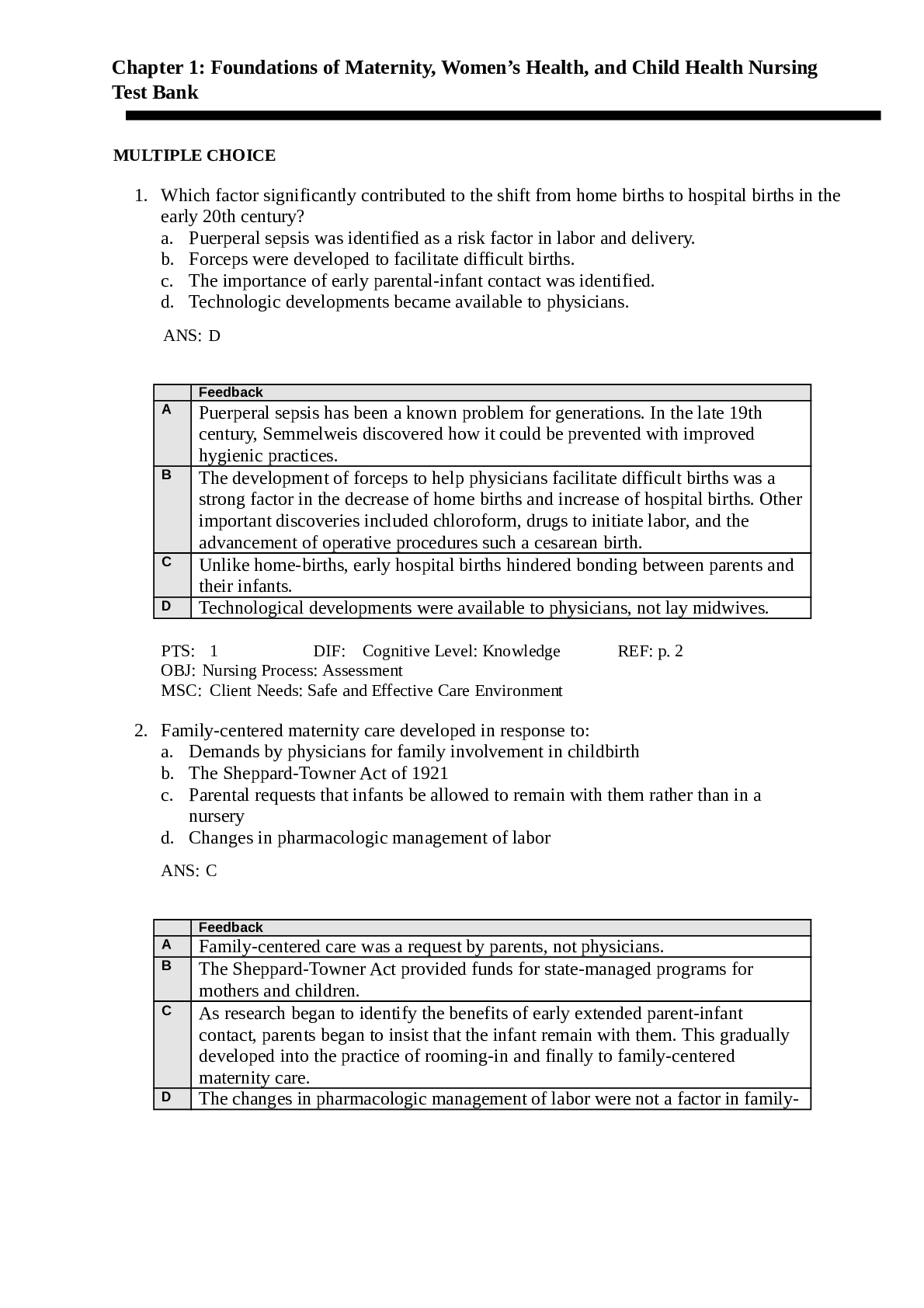
Reviews( 0 )
Document information
Connected school, study & course
About the document
Uploaded On
Apr 24, 2022
Number of pages
721
Written in
Additional information
This document has been written for:
Uploaded
Apr 24, 2022
Downloads
0
Views
38

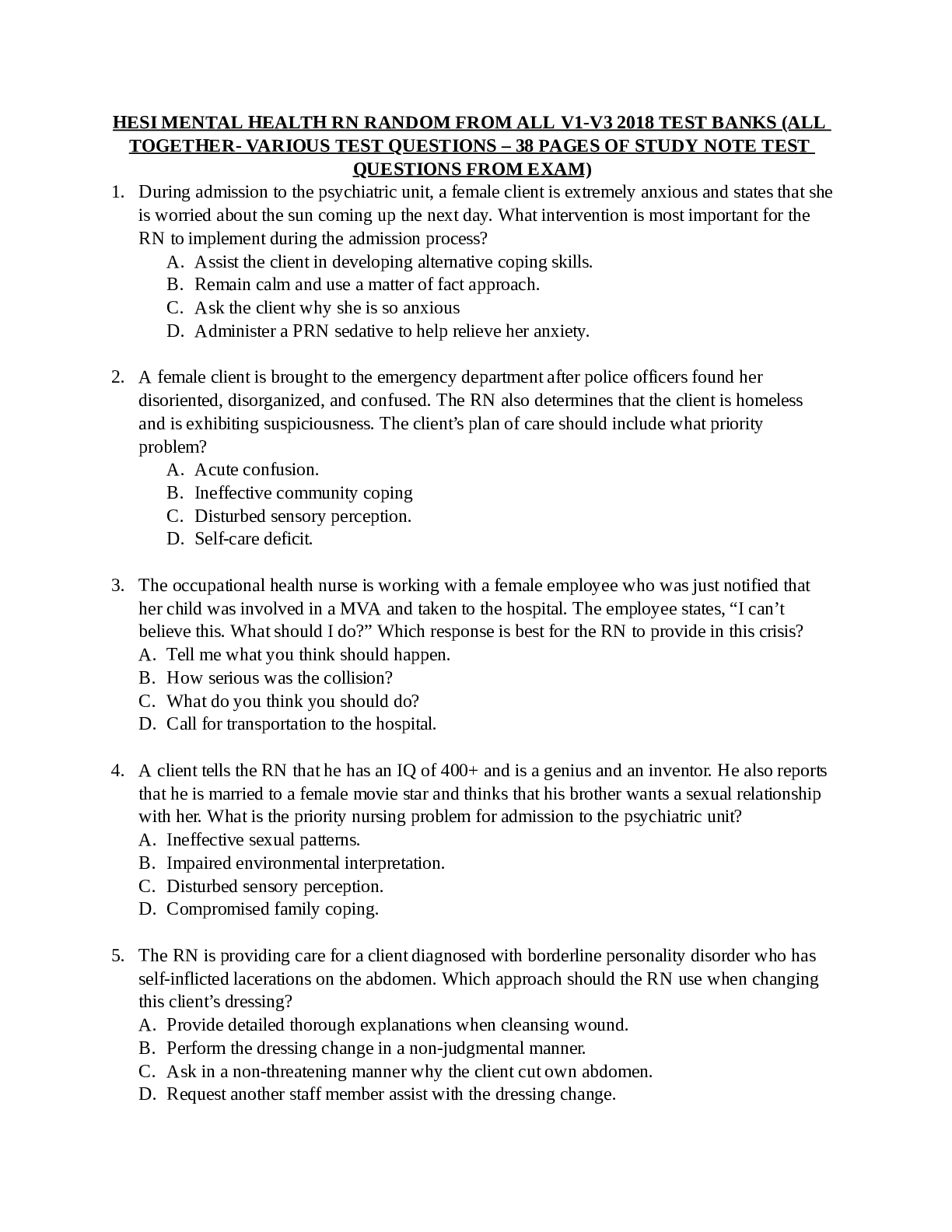

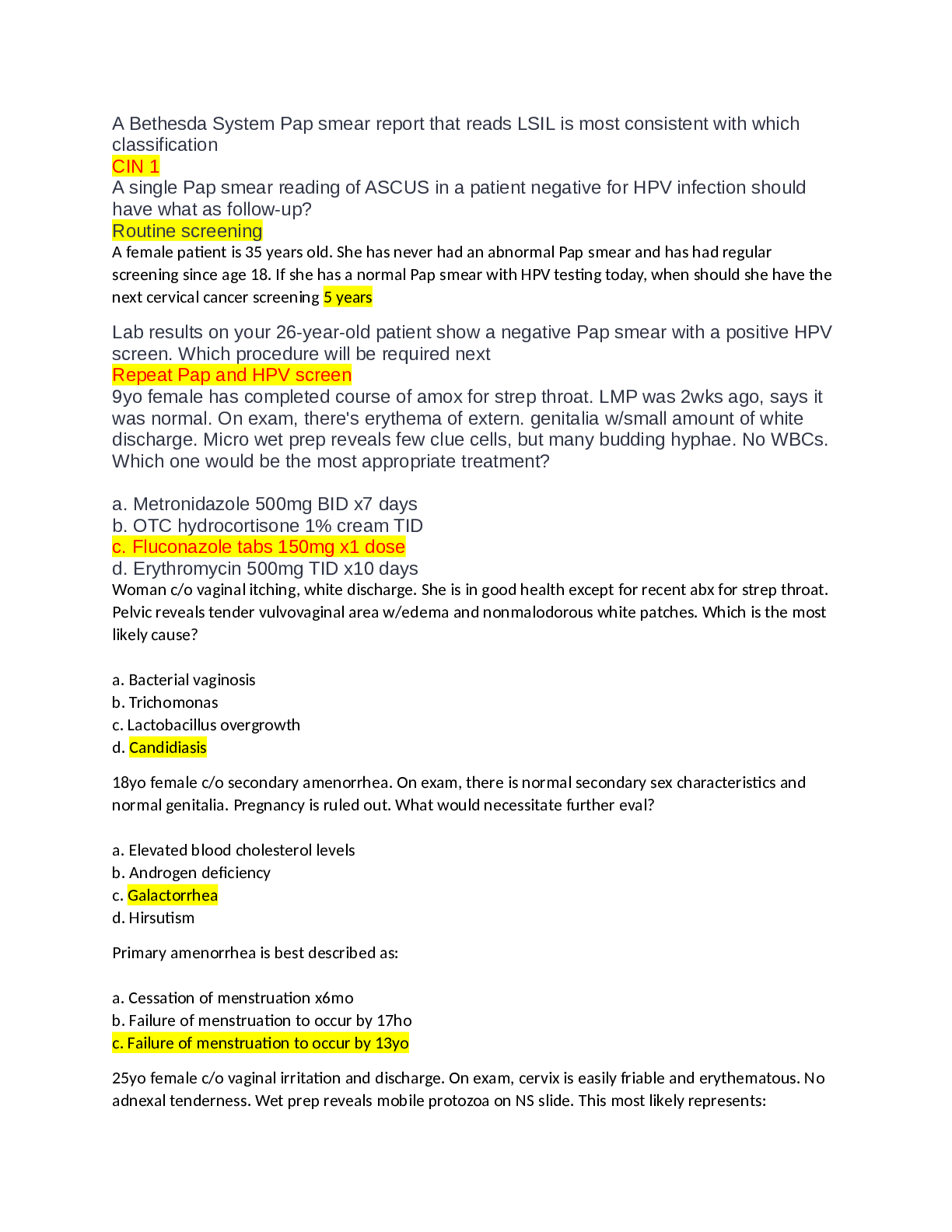

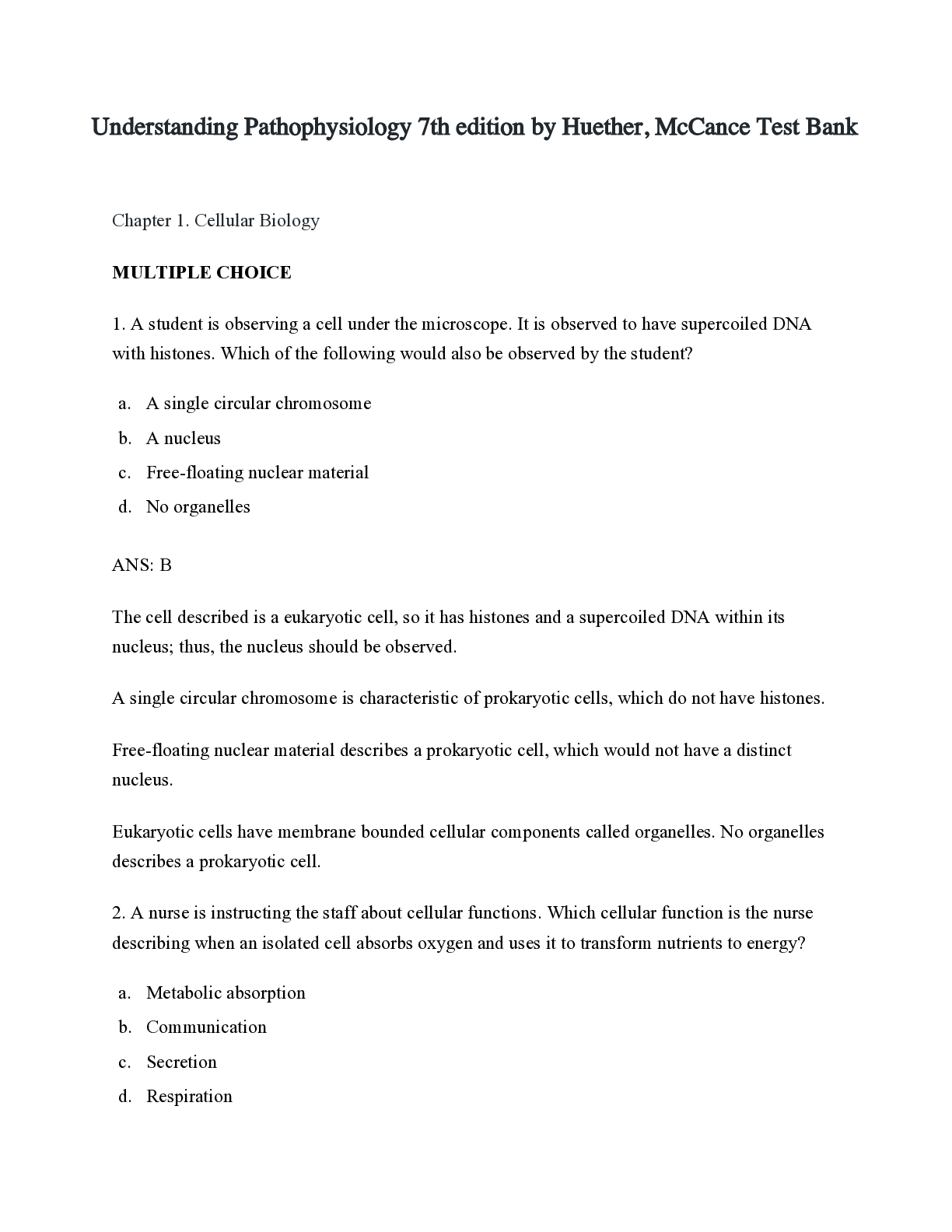
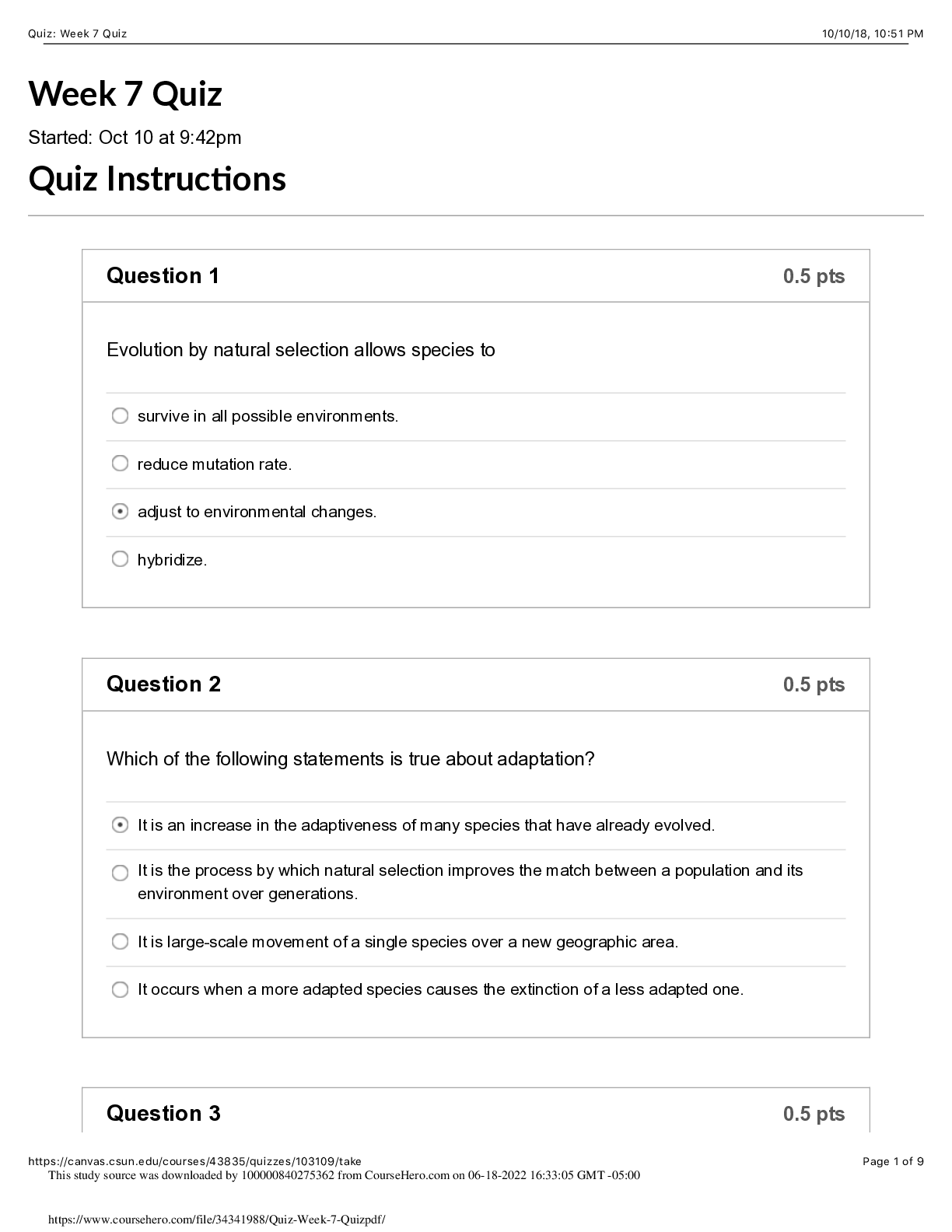
.png)



